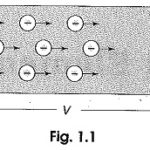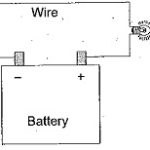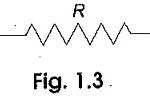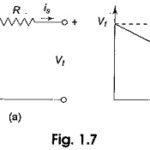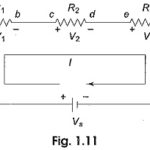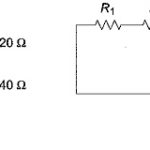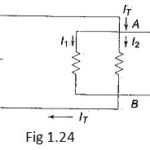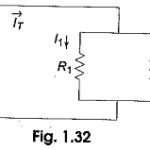Circuit Elements in Electrical Circuit Articles:
Electric Voltage: Electric Voltage states that, according to the structure of an atom, we know that there are two types of charges: Positive and Negative. A force of attraction exists between these positive and negative charges. A certain amount of energy … (Read More)
Current Definition: Current Definition states that there are free electrons available in all semiconductive and conductive materials. These free electrons move at random in all directions within the structure in the absence of external pressure or voltage. If a certain amount … (Read More)
Power and Energy Formula: Power is the rate of change of energy, and is denoted by either P or p. If certain amount of energy is used over a certain length of time, then where dw is … (Read More)
Basic Components of Electric Circuit: The Basic Components of Electric Circuit consists of three parts: (1) energy source, such as battery or generator, (2) the load or sink, such as lamp or motor, and (3) connecting wires as shown in Fig. … (Read More)
SI Unit of Electrical Resistance: When a current flows in a material, the free electrons move through the material and collide with other atoms. These collisions cause the electrons to lose some of their energy. … (Read More)
 Inductance Formula | Inductance Symbol: Inductance Formula explains that when a wire of certain length, when twisted into a coil becomes a basic inductor. If current is made to pass through an inductor, an electromagnetic field is formed. A change in … (Read More)
Inductance Formula | Inductance Symbol: Inductance Formula explains that when a wire of certain length, when twisted into a coil becomes a basic inductor. If current is made to pass through an inductor, an electromagnetic field is formed. A change in … (Read More) Capacitance Formula: Capacitance Formula is given by any two conducting surfaces separated by an insulating medium exhibit the property of a capacitor. The conducting surfaces are called electrodes, and the insulating medium is called dielectric. A capacitor stores energy in the … (Read More)
Capacitance Formula: Capacitance Formula is given by any two conducting surfaces separated by an insulating medium exhibit the property of a capacitor. The conducting surfaces are called electrodes, and the insulating medium is called dielectric. A capacitor stores energy in the … (Read More)Voltage Source and Current Source: According to their terminal Voltage Current Characteristics, electrical Sources of Energy are categorized into ideal voltage source and current source. Further they can be divided into Independent and Dependent sources. An ideal voltage sources is a two-terminal … (Read More)
KVL Law (Kirchhoff’s Voltage Law): KVL Law states that the algebraic sum of all branch voltages around any closed path in a circuit is always zero at all instants of time. When the current passes through a resistor, there is a … (Read More)
Voltage Divider Circuit Diagram: The series circuit acts as a Voltage Divider Circuit. Since the same current flows through each resistor, the voltage drops are proportional to the values of resistors. Using this principle, different voltages can be obtained from a … (Read More)
Kirchhoff’s Current Law Definition: Kirchhoff’s Current Law Definition states that the sum of the currents entering into any node is equal to the sum of the currents leaving that node. The node may be an interconnection of two or more branches. … (Read More)
Current Divider Equation: In a parallel circuit, the Current Division in all branches. Thus, a parallel circuit acts as a current divider. The total current entering into the parallel branches is divided into the branches currents according to the resistance values. … (Read More)
